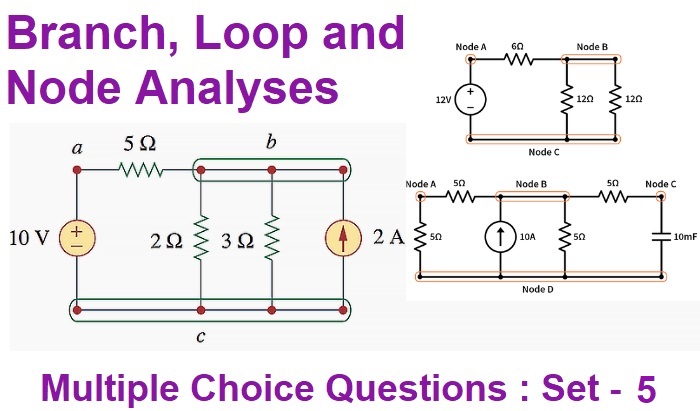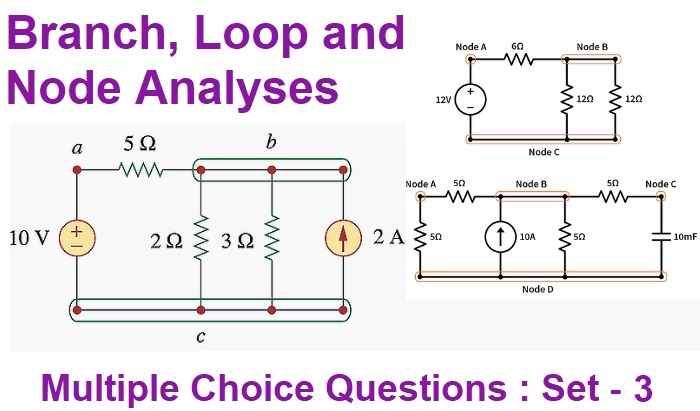DC Network Theorems - Determination of Voltage Sign
DC Network Theorems – Determination of Voltage Sign
Determination of Voltage Sign
During the solving of specific problems by applying Kirchhoff’s laws, particular attention should be given to the algebraic signs of voltage drops and e.m.fs., otherwise the results may be incorrect. Suggested sign conventions are given below :
(a) Sign of Battery E.M.F.
A rise in voltage should be given a + ve sign and a fall in voltage a −ve sign. Keeping this in mind, it is clear that as we go from the −ve terminal of a battery to its +ve terminal in the figure, there is a rise in potential, hence this voltage should be given a + ve sign. If, on the other hand, we go from +ve terminal to −ve terminal, then there is a fall in potential, hence this voltage should be preceded by a −ve sign.
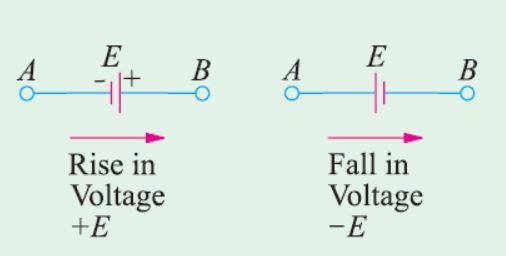
It is important to note that the sign of the battery e.m.f. is independent of the direction of the current through that branch.
(b) Sign of IR Drop
Now, take the case of a resistor, refer figure given below. If we go through a resistor in the same direction as the current, then there is a fall in potential because current flows from a higher to a lower potential.
Hence, this voltage fall should be taken −ve. However, if we go in a direction opposite to that of the current, then there is a rise in voltage. Hence, this voltage rise should be given a positive sign.
It is clear that the sign of voltage drop across a resistor depends on the direction of current through that resistor but is independent of the polarity of any other source of e.m.f. in the circuit under consideration.
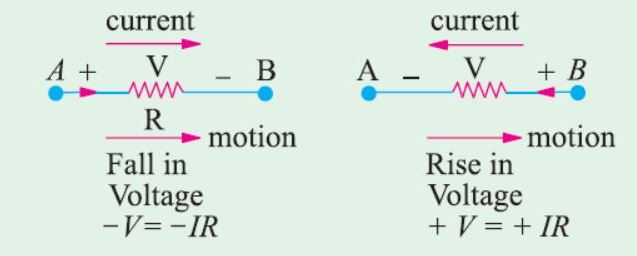
Consider the closed path ABCDA in Fig. 2.5. As we travel around the mesh in the clockwise direction, different voltage drops will have the following signs :
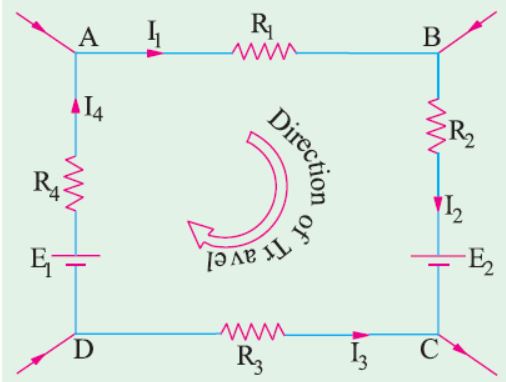
I1R2 is − ve (fall in potential)
I2R2 is − ve (fall in potential)
I3R3 is + ve (rise in potential)
I4R4 is − ve (fall in potential)
E2 is − ve (fall in potential)
E1 is + ve (rise in potential)
Using Kirchhoff’s voltage law, we get
− I1R1 − I2R2 + I3R3 − I4R4 − E2 + E1 = 0
or I1R1 + I2R2 − I3R3 + I4R4 = E2 – E1
Read article – Units of Resistivity
Visit NCERTplanet.com for NCERT solutions and Textbook downloads

